Slugs: Workshop on slug identification

Why slugs?
As a botanical illustrator who does lots of natural history illustrations too, it’s important to learn about the animals and plants I get asked to draw. I realised recently that not only did I know almost nothing about slugs, but I also had never done a decent illustration of one.
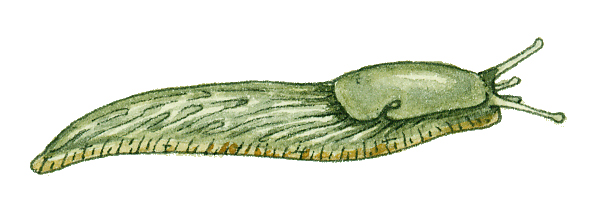
One of only two slug illustrations I have completed, it’s not good enough!
Soon after, I saw a day-long course on slugs offered by the School for Field Studies. FSC offer lots of fabulous courses, this one is run by Chris du Feu (who you can email on chris.r.dufeu@gmail.com).
Slug classification and anatomy
We assembled at the Bishop’s Wood FSC centre (worth a visit in its own right) and Chris started off giving us an introduction to slugs. First we had a simplified look at the anatomy of a slug:
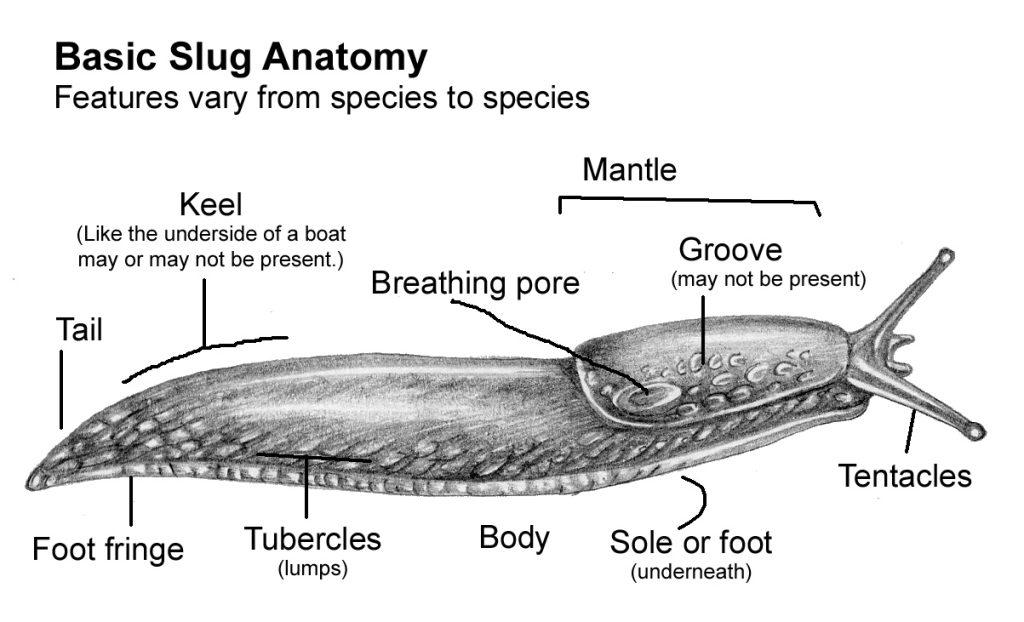
Slug anatomy (an annotated version the other of my current slug illustrations)
Next, he chatted about the complexities and contradictions of slug classification. He simplified it down to four families we could find in the UK. This made a seemingly daunting task really accessible. We also learned that not all slugs are pests, and that they are wrongly maligned and grossly under-recorded across the British Isles.
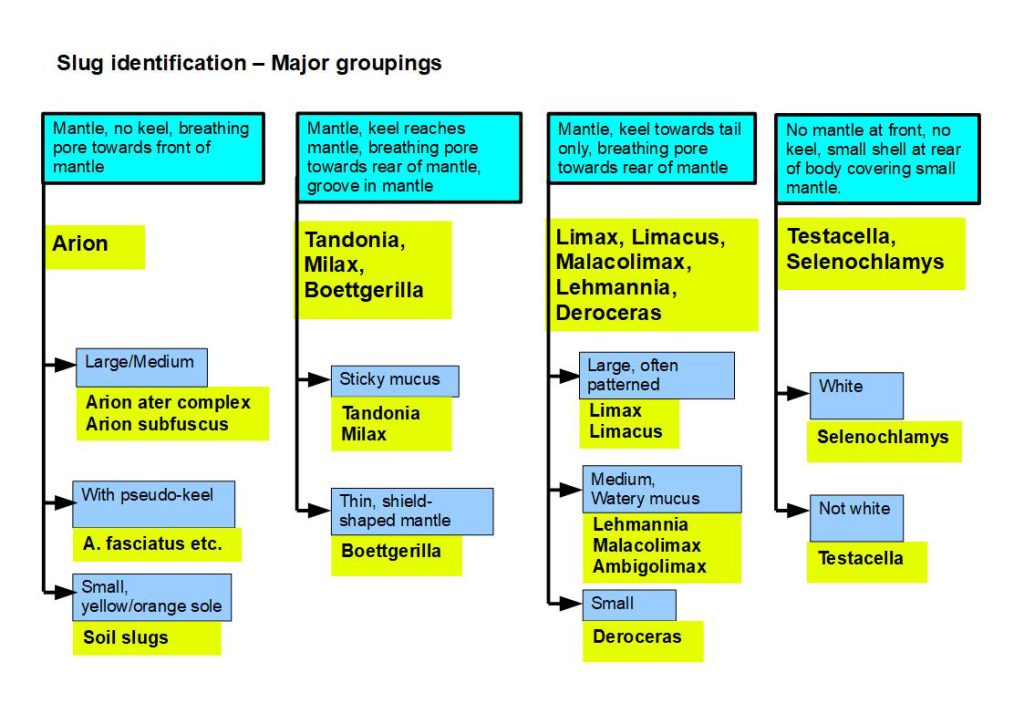
Traditional Slug classification, Chris made this far less intimidating!
He recommended online resources (such as the British Conchological Society and the Museum of Wales Slug pages) and reference books (which I’ve now bought) the best being “Slugs of Britain and Ireland “by Ben Rowson.
He finished by talking us through British slugs and what species we were likely to encounter, and how to tell them apart. This again simplified a seemingly very complicated area to something quite manageable. Basically, there are four families of slug we find in the UK. Round backed slugs (Arionidae), Keeled slugs (Milacidae), Short-keeled slugs (Limacidae), and Shelled slugs (Testacellidae). We were told the salient anatomical points for each family. Then Chris explained how to spot common individual species within each of these groups.
Round blacked slugs: Arion species
Equipped with this knowledge, we got to go through the specimens we’d brought with us, and try our hands at species identification. I worked with a partner, sketching each specimen as we worked through the features and tried to identify our subjects. Our first specimen turned out to be a rather lovely Arion rufus, or Red slug. This one looks a whole lot like the big black beasts you often see on grassland, after rain, but is a different species.
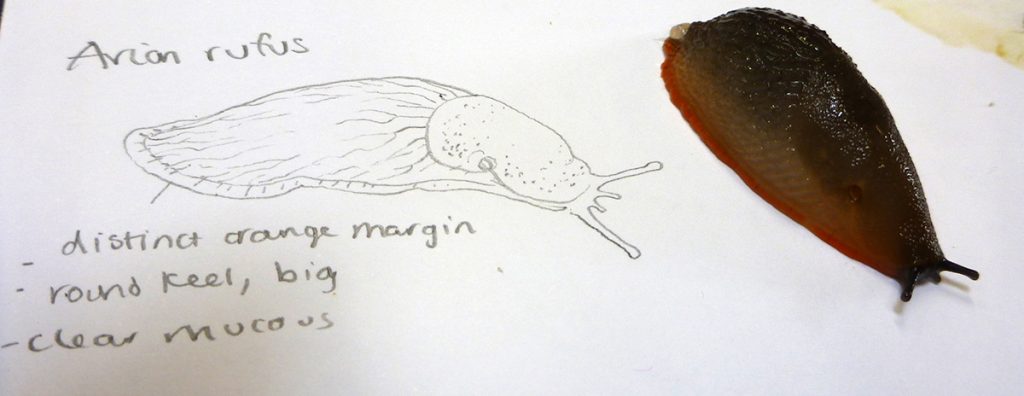
Red slug Arion rufus
Tell-tale signs are a bright margin in a contrasting colour round the foot, and a reluctance to rock when stroked. (This is one of my favourite discoveries of the day, that the adult big black slugs, Arion ater, rock gently from side to side if you stroke their mantles. It’s utterly charming.)
Next was a rather pretty creature, bands of dark brown against its ochre body. I had several of these, and they turned out to be Arion subfuscus, the Dusky Slug.
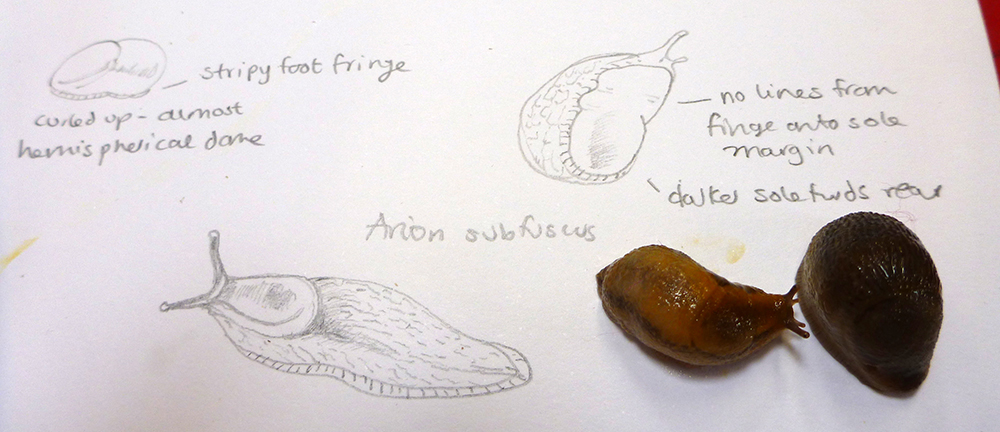
Dusky slug Arion subfuscus
This one has a stripy foot fringe, no lines bleeding onto the sole of the foot from the margin, and an amazing ability to produce startlingly yellow mucous.
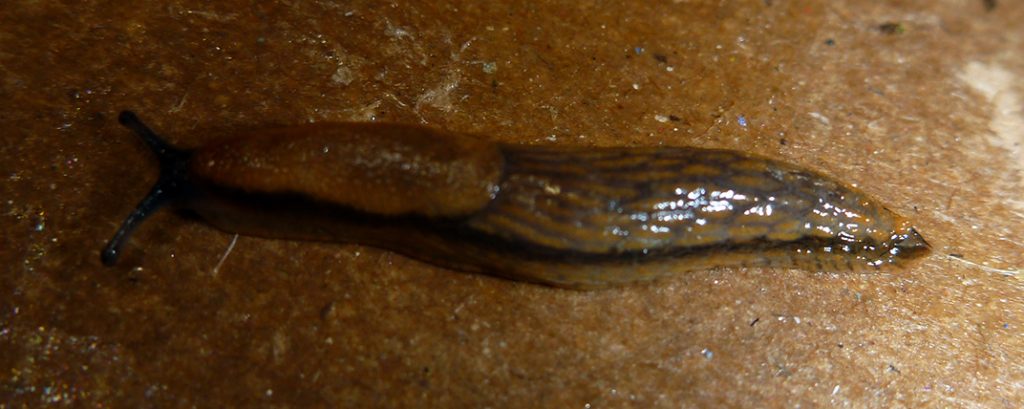
An appaling photo of the Dusky slug Arion subfuscus (this image helps explain why I’m an illustrator not a photographer…)
The Tramp slug
We found loads of a rather common little grey one, the Tramp slug Deroceras invadens.

Tramp slug Deroceras invadens
This is one of the “Short keeled” slugs, and has a tail that looks like it’s been pinched, and what looks like the ridges of a fingerprint on its mantle. In this species, this whirling is offset, centring round the breathing pore rather than centred on the middle of the mantle.
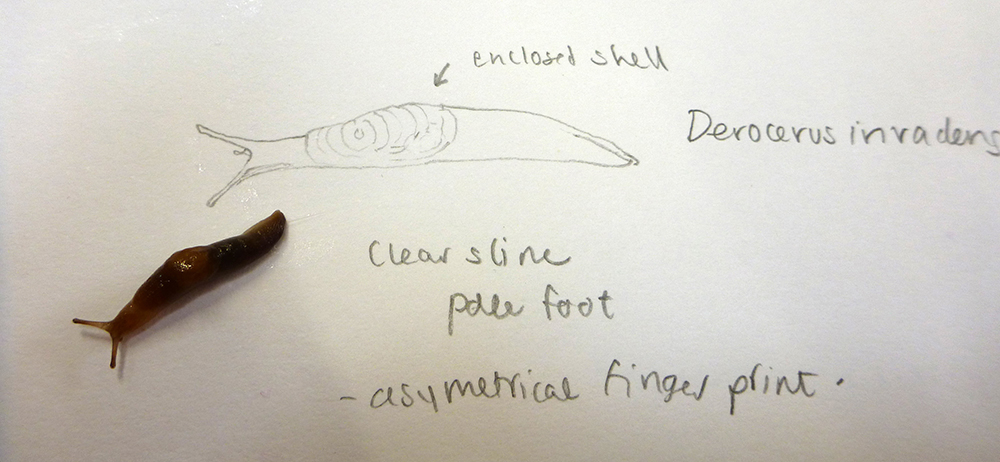
Tramp slug Deroceras invadens
In the case the Tramp slug, it has its breathing pore near the rear of the mantle, and has a pale ring around this (species indicators). It also moves incredibly fast (no, really!) and produces clear slime. It’s a garden pest and, to be honest, not a thing of great beauty.
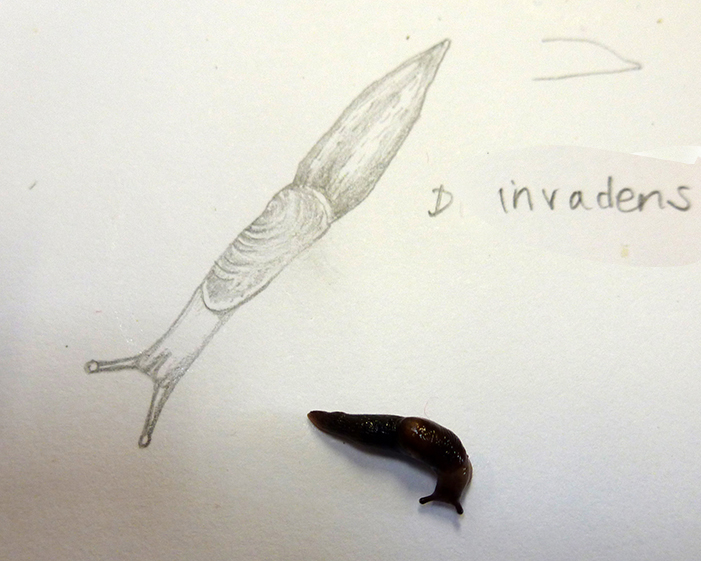
Tramp slug Deroceras invadens
Short-keeled slugs
I was very taken with the Green cellar slug Limacus maculatus. This big slug is also from the “Short-keeled” family, and is very familiar to me as my compost bin is swarming with them. They’re big, yellowish, and on close inspection have rather beautiful delicate grey spots and markings.
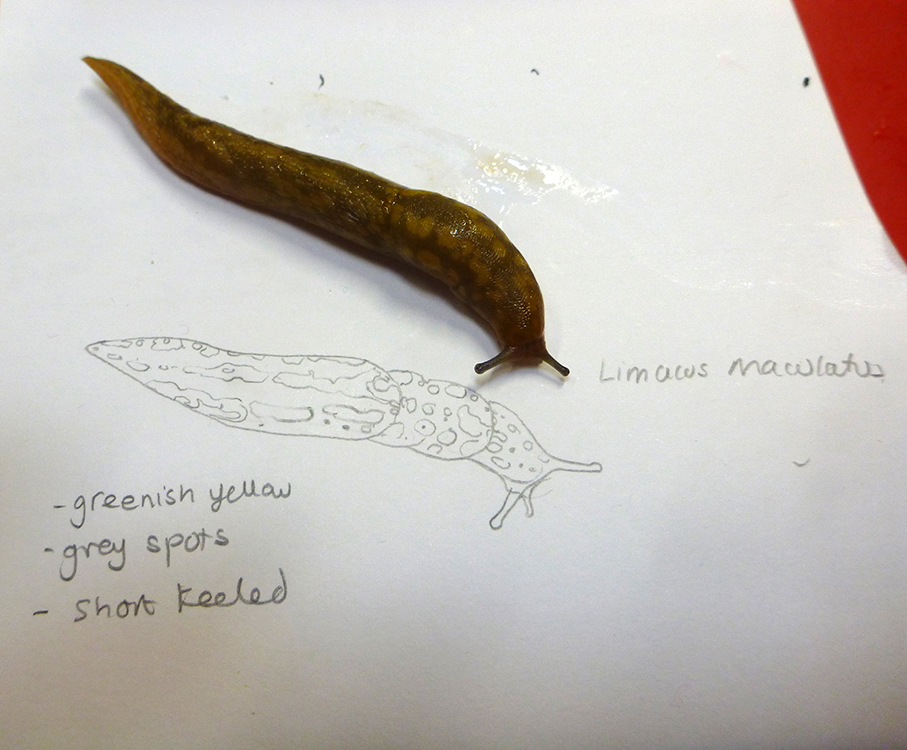
Green cellar slug Limacus maculatus
Unlike the asymmetrical “fingerprint” on the mantle of the Tramp slug, this beauty has concentric rings on its mantle.
Next we found an elegant white slug, with the tiniest of lines of magenta along its keel. This pretty animal is the Keeled slug Botgerilla pallens. It’s English name of Worm slug does not do it justice.
The Greenhouse slug Ambigolimax valentianus is another Short-keeled Limacidae. It has a finger print centred on the mantle, a pale sole, no foot fringe (none of the Keeled slugs have foot fringes) and very pale stripes. Production of lots of watery mucous is another give away that helps identify this species.
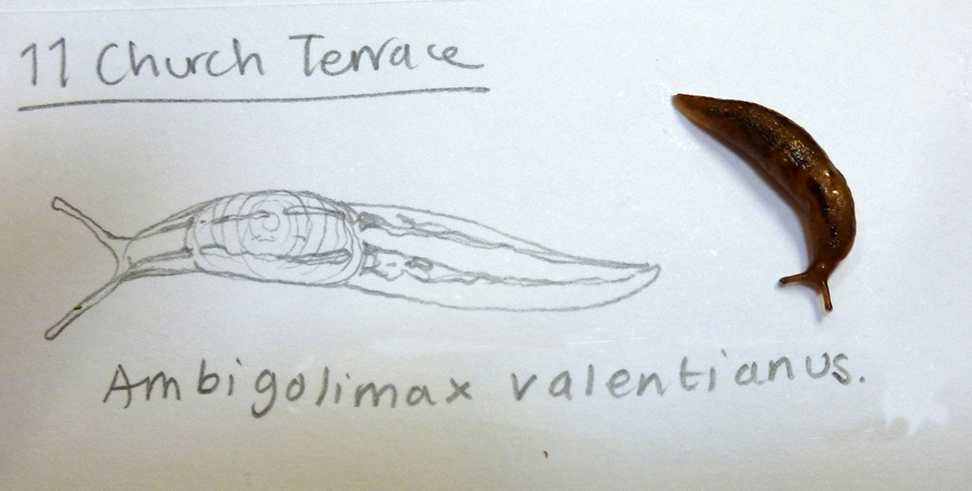
Greenhouse slug Ambigolimax valentianus
We found the Grey Soil slug (Soil slugs used to be known as Garden slugs) Deroceras reticulatum in a pot of specimens collected near Brecon. This slug produced lots of milky mucus , was fast moving and pale, with a white sole. It looked rather like it was covered in a piece of mouldy muslin or net, with irregular grey markings. This explains its other English name, the Netted Field slug, and the Latin monica “reticulatum” which also means netted. This is one of the most well recorded slugs in the UK, and is regarded as a real pest in the garden.
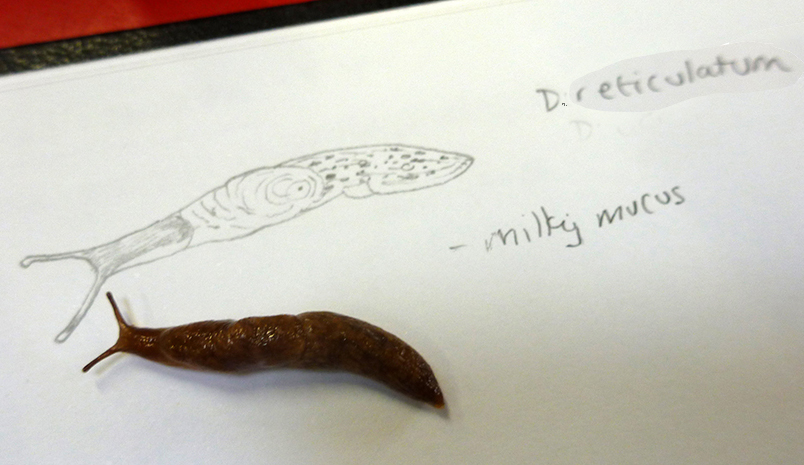
Grey Garden slug Deroceras reticulatum
Finding and identifying slugs in the field
Slug samples all successfully identified and recorded by Chris to add to the National database (slugs are massively under-recorded, so all our samples provided useful data), we went out to the grounds around the centre to explore.
We found a Great Crested newt hiding in a tree stump, lots of Arion subfuscous, and a wonderfully large and darkly spotted Leopard slug Limax maximus. In the past, I’d thought my Green cellar slugs were Leopard slugs. Having seen both species in one day I won’t be tempted to make the same mistake again. They’re very different. The Leopard slug has properly black markings, feels far dryer, and is enormous compared to the modest Green cellar slug.
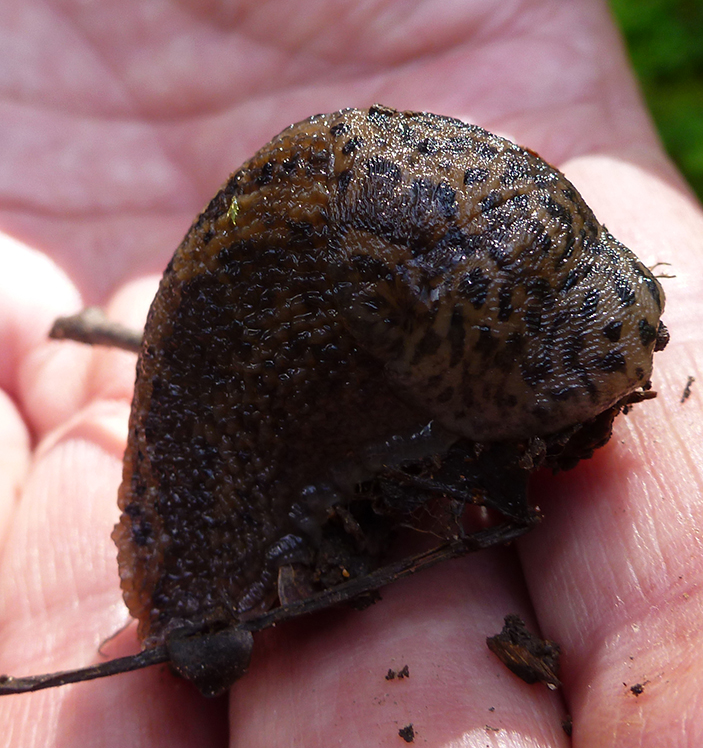
Leopard slug Limax maxinus
We also found a whole clutch of the elegant tree slug Lehmannia marginata (which ascends trees, grazing on the algae that grows on their bark).
And with that, the day was done.
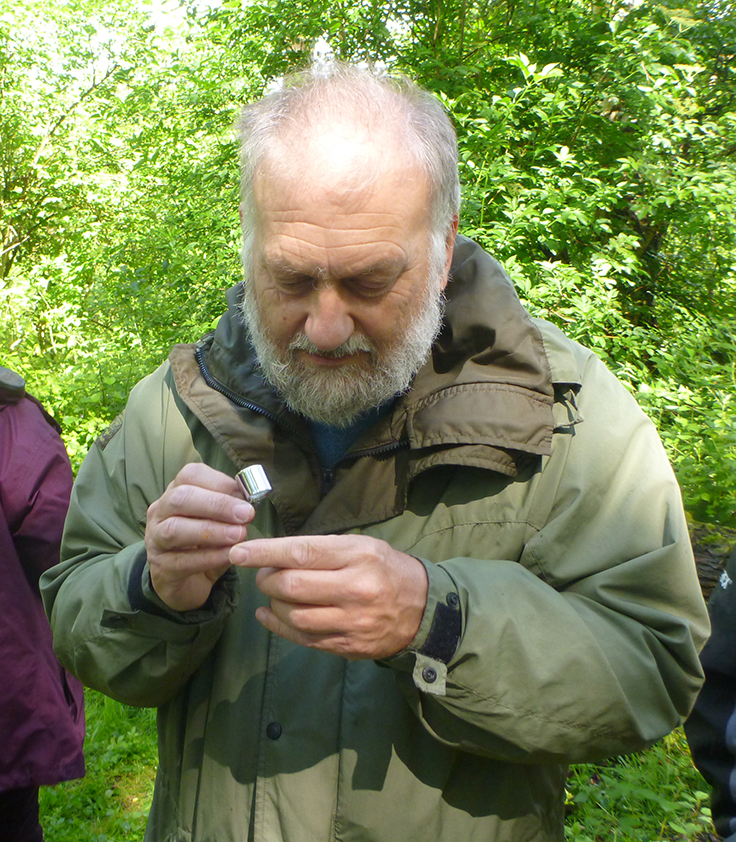
Chris du Feu with a slug and a hand lens, in the field.
Watercolour illustration of the Green cellar slug
I came away totally entranced by these maligned and ignored molluscs. I have already illustrated the Green cellar slug, and am wondering about trying to paint Arion subfuscus too (although if it crawls about on the watercolour paper it’ll stain it with its orange mucous….)
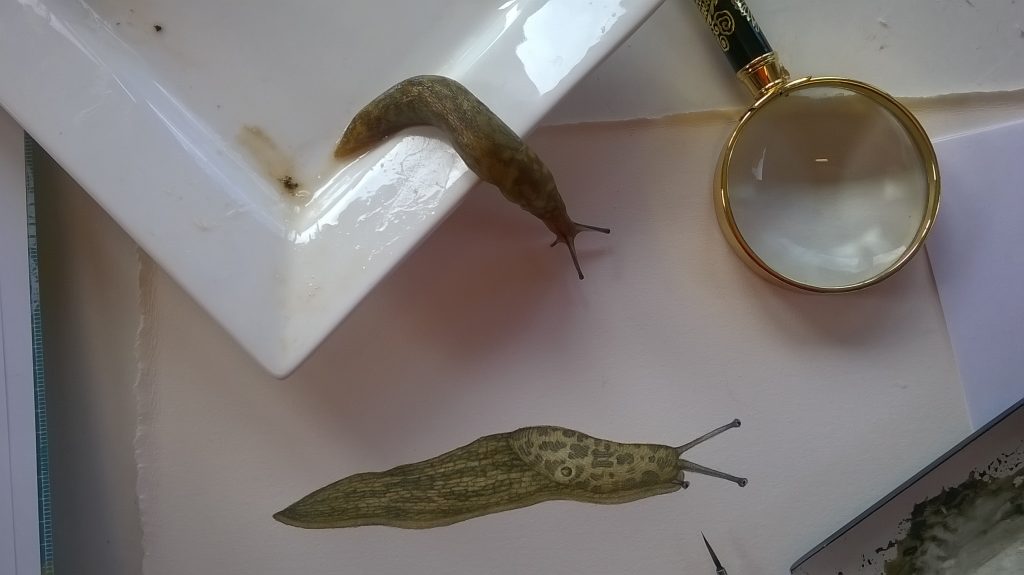
Limacus maculatus specimen checking out my portrait of it.
I really enjoyed painting this animal, although it was really active it somehow wasn’t impossible to work from, and as this species doesn’t move particularly fast, it was pretty easy to corall!

Green Cellar Slug Limacus maculatus
I realise I’ve recently become a bore about mosses. With my historical love of grasses, I am delighted to add a nascent slug obsession to the mix. My poor, poor family! We’ll never make it to the pub in time for lunch when we go walking now!
Many thanks to Chris for giving this blog a read and edit before I published it, and for providing the classification chart.


Awesome illustrations!! I loved the day I spent with Chris in North Wales but can only dream of capturing the details as you have here! Look forward to seeing more of them in the future ??
Im so glad you went on one of his courses too. Amazing to learn so much about such cool and overlooked animals. I want to do more now, I need to find the time to do another one to accompany the Green cellar slug. Thanks for the comment! x
Lovely
Linked in iSpotNature (Slugs) https://www.ispotnature.org/communities/uk-and-ireland/view/project/874426/
Thanks Derek